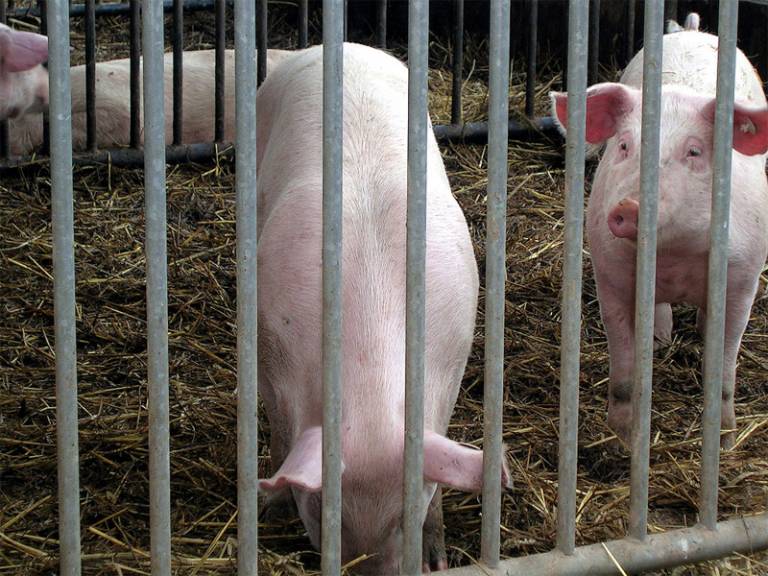The 3Rs in practice: sourcing organs from abattoirs
5 September 2018
Pig organs from abattoirs can be used as a model for infection, reducing the need for laboratory animals, according to research led by Dr Giuseppe Ercoli (UCL Medicine) who previously won the inaugural Adrian Deeny Award for Implementation of the 3Rs in Research.

The team, including scientists at the University of Leicester and Leicester Hospitals, developed a perfusion model using pig spleens - wherein blood is passed through the organ - to investigate antimicrobial therapy as a means to prevent sepsis in people with pneumonia.
For the new method, explained in an article published in ALTEX, spleens were taken from pigs who had been slaughtered for food production, thus causing no extra harm to any animals.
The researchers set out to study bacterial infection in human spleens, the main organ responsible for innate immunity, to advance our understanding of invasive infections.
Pig spleens are an effective proxy as they share more similarities with human spleens than other animal models do, such as rodents.
Earlier this year, the research group published a separate study in Nature Microbiology using the pig spleen model which showed that antimicrobial therapy may be effective at preventing sepsis by interrupting the replication of the bacterium that causes infection.
A key advantage of the pig spleen model is that it can be re-used such that a single infected pig spleen yields as much data as 48 mice models, that is more valuable due to the similarities between pigs and humans.
Laboratory mice were used in the study, but the researchers say without the pig spleen model, they would have needed to use 480 additional mice to obtain the same amount of data.
"I'm proud that my research is supporting the principles of the 3Rs - Replacement, Reduction and Refinement in animal research. While animals are often necessary in research, it's important to move towards alternative models. Sometimes the alternatives can even be more effective, such as our method that uses a better model due to closer similarities to humans," said Dr Ercoli.
The approach is particularly useful for honing in on the early stages of an infection. While there are limitations to working on a simplified system of just one organ, that approach also bears an advantage, enabling researchers to focus on that organ's response, and test multiple parameters while the experiment is ongoing.
The researchers are hopeful that their technique could also be applied using other organs to study different infections.
Links
- Research paper in ALTEX
- Inaugural Adrian Deeny Award
- Dr Giuseppe Ercoli's academic profile
- UCL Medicine
Image
- Credit: Mathias Bigge, Source: Wikimedia Commons
 Close
Close

